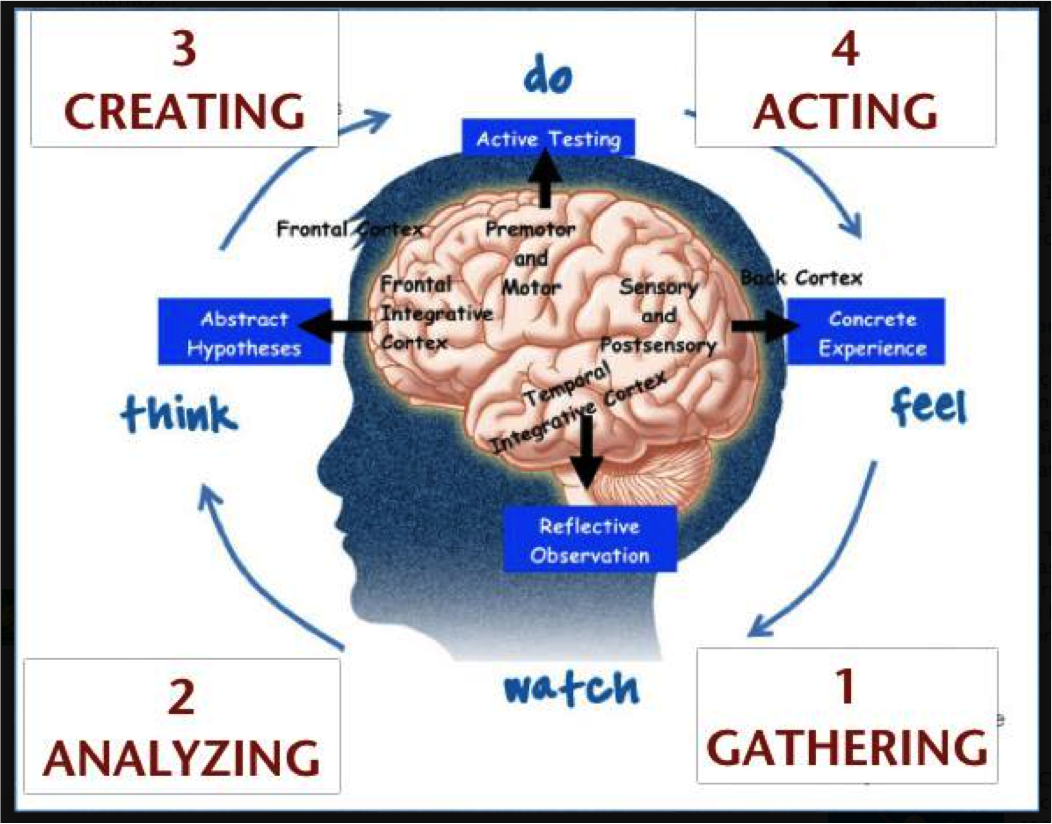There are at least two different ways to help teachers who are designing iPad activities with students to evaluate the tasks they create. The SAMR model helps a teacher/task designer become aware of what stage the task falls into in terms of the use of tech. The Bloom Taxonomy applied to apps helps teachers think about the kind of questions we ask students and how we should vary the tasks we offer. By delivering the workshop From Image to Deep Learning, I started to understand that teachers can also look into the learning cycle as a whole, and how the human learning brain works to promote deep learning. The ideas I share here were inspired by the book The Art of Changing the Brain, which is a must read for any educator willing to take a look into the biology behind learning.
In the workshop, I asked the audience how to teach questions with does to teens, and develop tasks having the learning cycle in mind. After a quick debriefing, I showed a simple iPad activity I carried out in class of 11-year-olds, talked about my take in the lesson, and expanded about why I think this task pleases the learning brain. Now, I post my ideas here to help me reflect on my practice, having the learning cycle described in the aforementioned book in mind.
I showed students a quiz about a famous person I knew they would be interested in. Students took the quiz, and I inductively helped them notice how to make questions about a third person`s likes and dislikes. Then, I asked them to gather information about a celebrity they follow to make a quiz of their own.
I was afraid that I`d have no pictures to work with on the following class, but to my surprise, students had bought the idea and had pictures and lots of information to work with. I was ready to go, so I set the iPad activity and monitored students. Here is what two pairs produced using a wonderful app called visualize.
In the art of changing the brain, Zull talks about phase 1 - concrete experience. In this phase, there is activity in the sensory cortex, where we receive, gather and begin to process the visual, auditory, tactile, olfactory, and gustatory information. Phase 2 - reflexive observation, seems to describe an activity that takes place in the integrative cortex. It is time to connect sensory images to prior experience in one`s neural network or schemas. In class, passing from phase 1 to phase 2 might take time as learners need to relate new information to what they already know. We cannot rush. We must allow time for thinking/recalling as well as time to reflect upon the learning experience.
In the activity I proposed, my students were exposed to a visually appealing quiz about a person they were genuinely interested in, and took the quiz themselves to find out how much they knew about the person. As I see it, students went through stage one and two of the learning cycle before we started the second part of the activity.
In phase 3 - abstract hypothesizing, the front integrative cortex is at work. Students start to prepare to do something with the recently acquired knowledge. In the iPad activity, I asked students to get the information about their favorite celebrities and start to put it in the format of a quiz for the other students in class. And by asking students to make these quizzes to communicate their recently acquired knowledge, teachers allow students time to test their hypothesis and think. In phase 4 - active testing, students shared their quizzes, and by doing so, provided peers with concrete experiences, so the whole class was back to phase 1. Learning becomes cyclical and on going, and hopefully they will remember the language point long after the day of the test.
In conclusion, instead of asking students to pay attention, it is better when we can engage students in tasks in which they are supposed to reach outcomes, or ask them to look at the topics from different angles. Instead of sitting still, learners could be asked to move around to see the details. In other words, by making learning more concrete we might reach concrete outcomes.


No comments:
Post a Comment